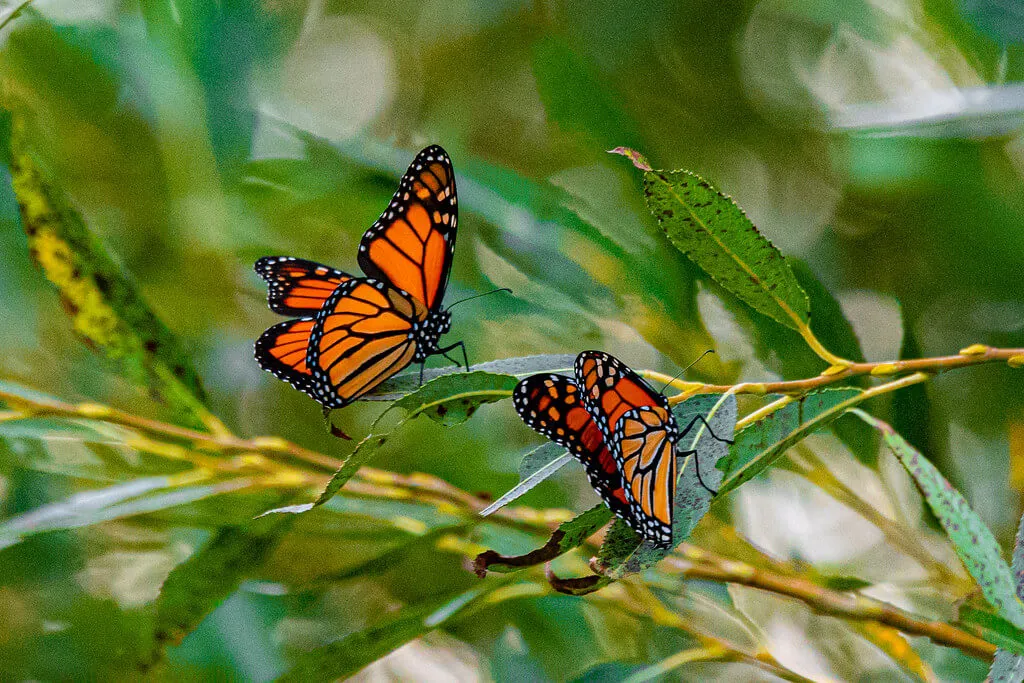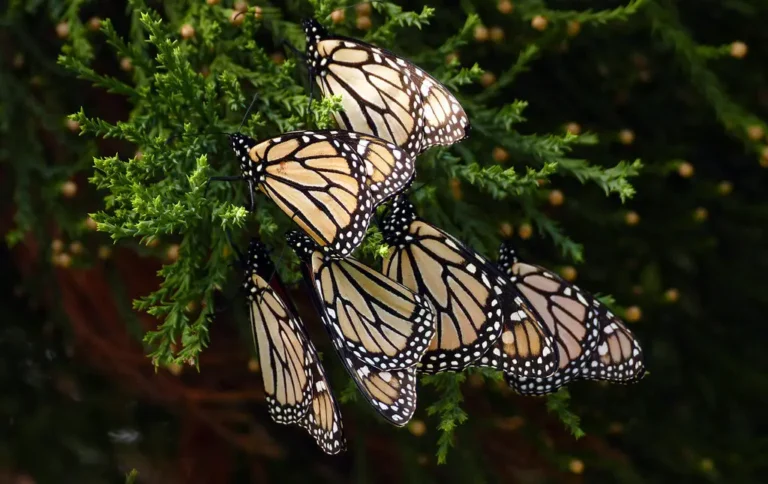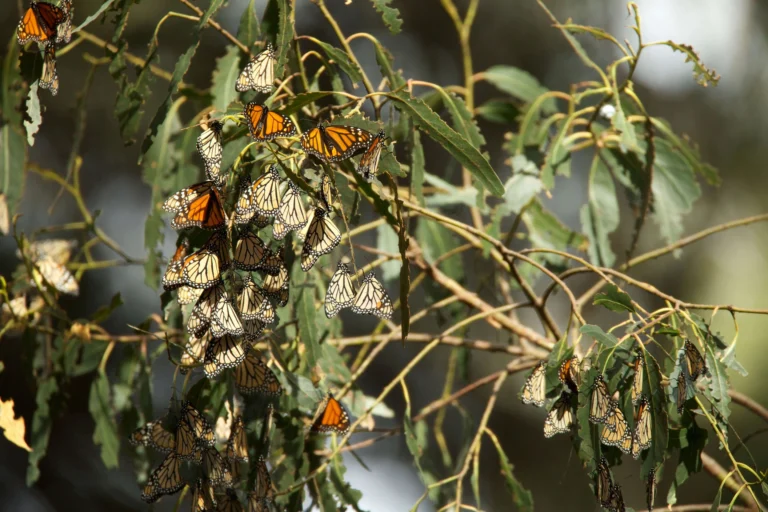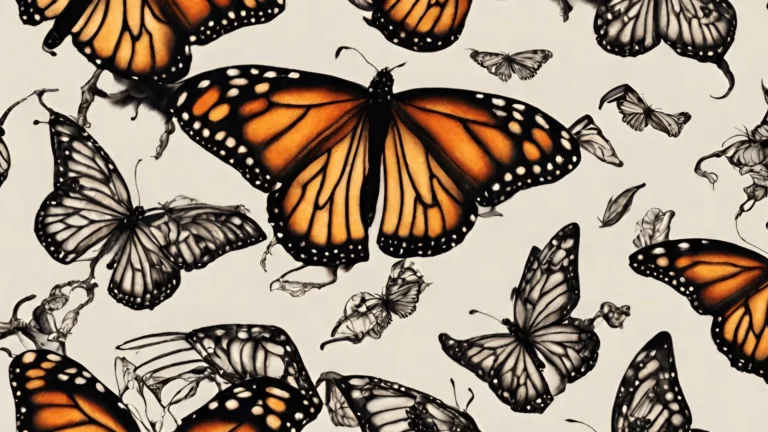Male Monarch Butterfly vs Female: A Detailed Comparison
Male Vs Female Monarch Butterfly in a Nutshell: Male monarch butterflies are different from female ones. They have bright colors and two clear black spots on the back wings. Their bodies are more narrow and the lines on their wings are not as thick as on females. Males are lively and move a lot, especially when they want to find a mate. Female butterflies often search for suitable spots to lay their eggs and care for their young. Understanding these differences can make learning about them really interesting.
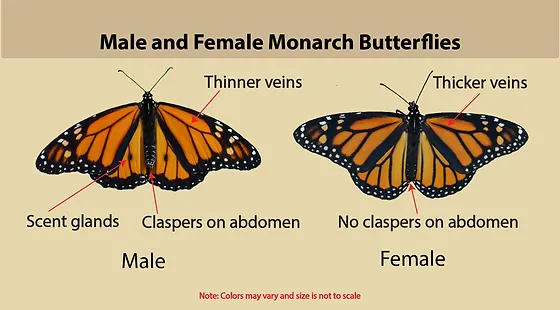
Table of Contents
Introduction
Male monarchs look different from females and behave differently, especially when seeking a mate.
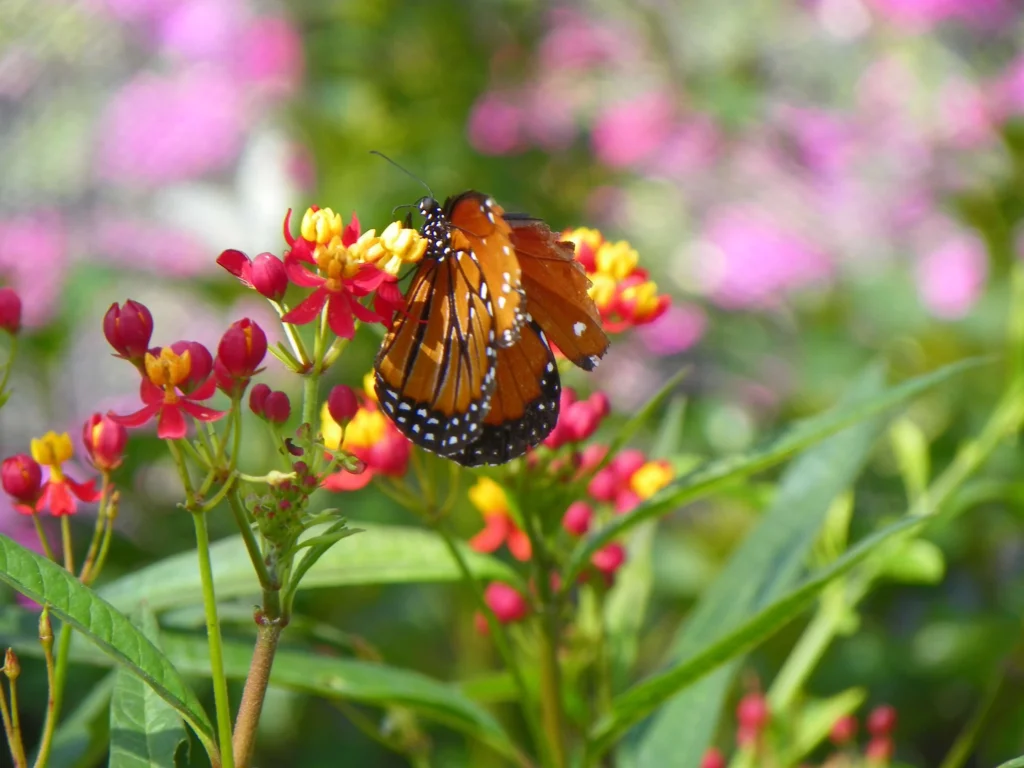
Females prioritize finding the right places to lay their eggs, preparing for the next generation of butterflies.
In this post, we’ll look at how male and female monarch butterflies differ in looks, behavior, and their natural roles.
Let’s start this exciting journey, discovering the interesting facts that the world of the male monarch butterfly has to share.
Why It’s Important to Know the Difference Between Male and Female Monarch Butterflies
Recognizing the differences between male and female monarchs enhances our appreciation of nature’s beauty and complexity.
Identifying male and female monarchs can be fun for nature photographers, butterfly watchers, or the simply curious! Knowing these differences can make your outdoor experiences more enriching and educational.
Discover more about the lifecycle and stages these butterflies go through from our detailed guide on monarch butterfly lifespan.
Identifying the Male Monarch Butterfly

Physical Features
Wing Patterns and Body Structure
Male monarch butterflies are a sight to behold. Their wings boast a vibrant orange hue with black markings and veins, creating a stunning visual contrast. But how do you tell them apart from the females?
Well, the males have a distinct black spot on each of their hind wings, which are the lower pair of wings. This spot is a surefire way to identify a male monarch butterfly, as females don’t have these spots.
Sensory Organs
In general, butterflies possess amazing sensory organs. For the male milkweed butterfly, their antennas are their super tools. They use these antennas to smell and navigate their way around.
Their strong sense of smell helps them find nectar-rich flowers and locate adult monarchs during mating season.
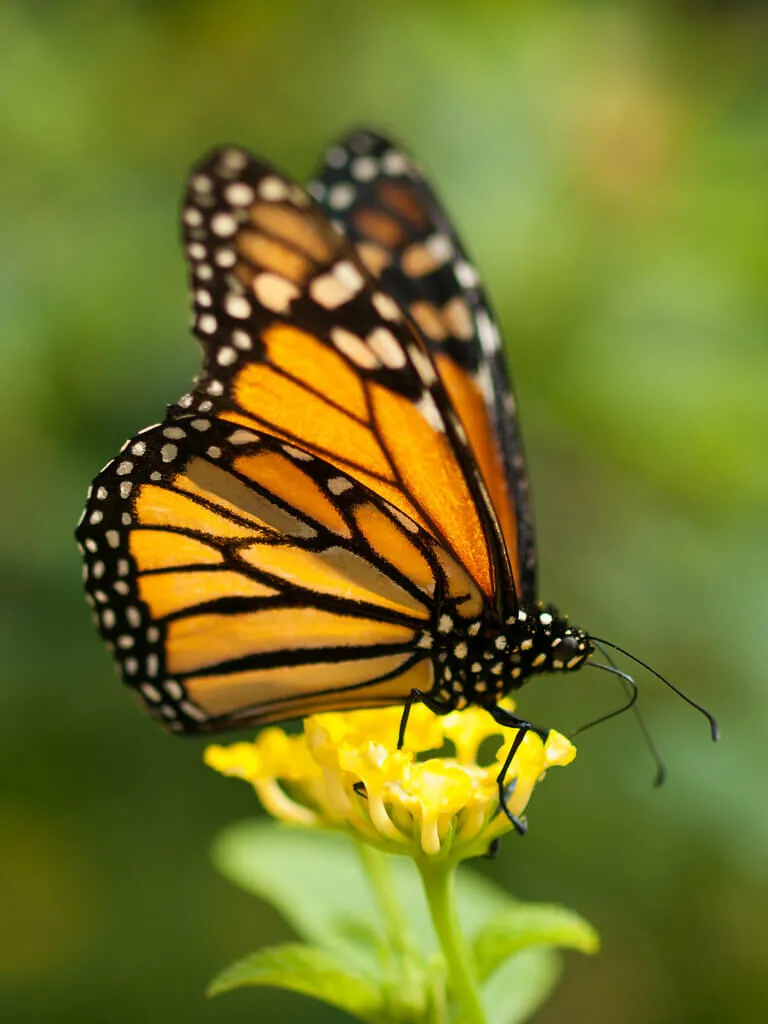
Behavioral Characteristics
Behavior During Mating
Mating season is a busy time for male monarch butterflies. They often flutter around, searching for a mate. During this time, they showcase a series of courtship displays to win over the female.
This might include a series of dances and aerial displays which are quite a sight to witness.
Where Male Monarch Butterflies Like to Feed and Live
When it comes to their habitat, these orange-winged wonders prefer monarch habitats rich with flowers where they can feed on nectar. For monarchs living west of the Rocky Mountains or even east of the Rocky Mountains, they love sunny spots and often flutter in gardens, meadows, and fields.
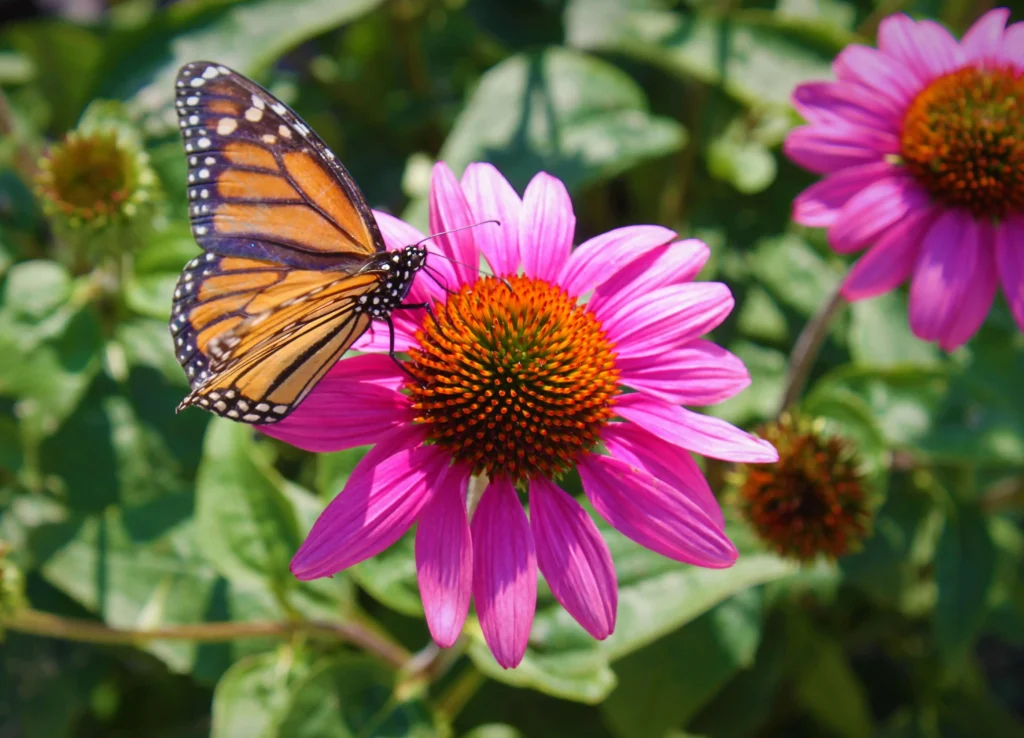
They prefer milkweed plants for feeding and laying eggs because it’s safe for their young.
Learn more about the dietary habits of these creatures from our article on what monarch butterflies eat.
The Flight of the Male Monarch Butterfly: What Makes It Special?
The flight of this milkweed butterfly is not just a visual treat but also a marvel of nature. Their flight is somewhat relaxed but purposeful. They have a unique way of fluttering their wings gracefully, which distinguishes them from other butterflies.
In-Depth Comparison: Male Vs. Female Monarch Butterflies
At first glance, male and female monarch butterflies might look quite similar. But when you take a closer look, you can spot some differences. Apart from the black spots on the hind wings of males, they also have slightly narrower body structures compared to females.
Additionally, the veins on a female’s wings are often thicker than those on a male’s wings. These small but noticeable differences play a significant role in distinguishing between male and female monarch butterflies.
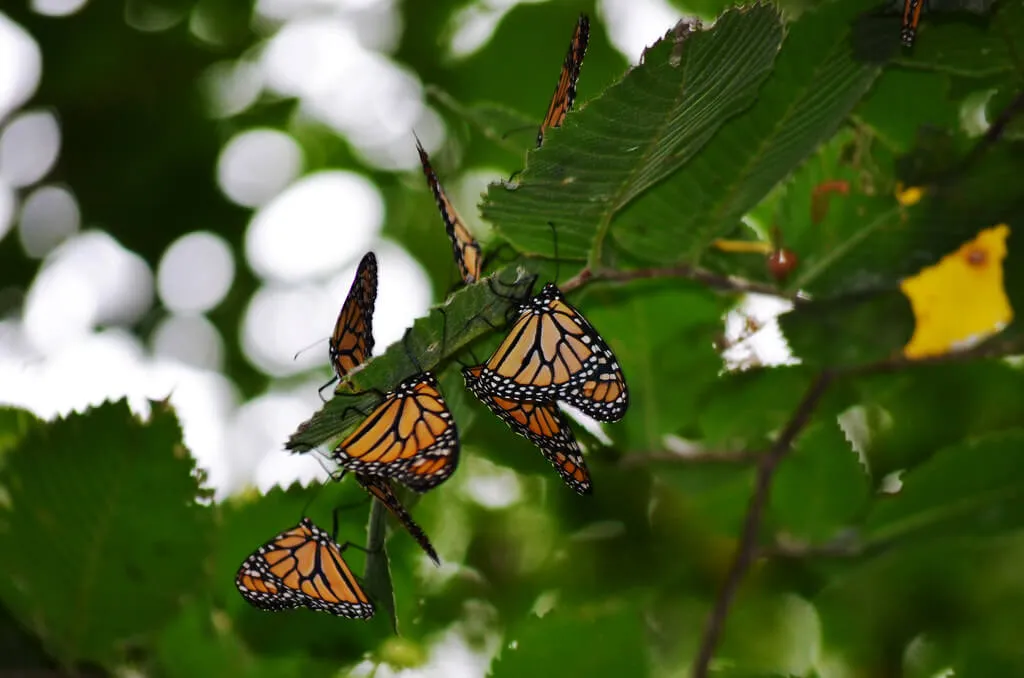
The Behavioral and Reproductive Differences
In behavior, males often flutter around more because they’re more active, especially during mating season. They engage in a series of aerial displays to attract females.
Females prioritize finding the best spots to lay eggs, securing the future of monarch butterflies. They look for the ideal plants to nurture their young, which we discuss further in our guide on monarch butterfly plants.
Reproduction clearly defines their roles. Females lay eggs on the milkweed plants, providing the caterpillars with an immediate food source once they hatch.
Males, on the other hand, focus on mating and fertilizing the eggs, making sure their family line goes on.

Life Cycles: How Male and Female Monarch Butterflies Differ
From egg to butterfly, the life cycle of monarchs is fascinating. Both males and females go through the same stages: egg, caterpillar, pupa, and adult. However, once they reach sexual maturity, their paths diverge.
Males actively seek mates, while females focus on finding the best places to lay eggs.
Despite these different roles, they both contribute equally to the creation of new generations.

Living Together
How Male and Female Monarch Butterflies Get Along
In the butterfly world, males and females have different roles but they live together well. They mainly interact during the mating season.
Both often share habitats, feed on the same flowers, and bask in the sun together.
The Important Role in Nature
Male monarch butterflies, with their vibrant colors and active behavior, bring a burst of life and color wherever they go. Their role in the ecosystem goes beyond just mating.
They help with pollination, important for many plants to make more of their kind. By doing this, they help keep nature’s balance and add to the variety of life.

Real-Life Observations: How Male and Female Monarch Butterflies Interact
Witnessing the interaction between male and female monarch butterflies can be a delightful experience. Observations have shown that males are quite persistent during courtship, showcasing an array of vibrant displays to woo the females.
It is a natural dance of love, symbolizing the circle of life in the most beautiful manner.
Don’t forget to check our detailed feature on the monarch butterfly migration to expand your knowledge!
Frequently Asked Questions
Are there male monarchs?
Yes, there are indeed. They’re vital in the Danaus plexippus lifecycle, actively mating to support the next generation.
What is a male monarch called?
We simply refer to a male monarch as a “male monarch butterfly. In scientific circles, both the male and female monarch butterflies share the species name “Danaus plexippus.”
How Can You Tell Male and Female Monarch Butterflies Apart Just by Looking?
The quickest way to tell them apart is by checking the hind wings. Male monarch butterflies have a conspicuous black spot on each hind wing, which is absent in females.
Moreover, the females have thicker veins on their wings and a slightly rounder body compared to the males. These physical differences are quite apparent and make the identification process quite straightforward.
Final Thoughts
In wrapping up, we hope you’ve enjoyed exploring the captivating world of the male monarch butterfly. These bright and patterned creatures are essential to our ecosystem.
Beyond being a visual treat, they’re key pollinators that support plant growth and reproduction.
The active and lively male monarchs, especially during mating displays and interactions with females, showcase the stunning beauty of nature.


